HOW TO SEND CDs TO RADIO
As a working musician I spent
nearly 30 years trying to get my records played on the radio. Since then, 5 years
of working at a radio station have taught me a lot about how airplay actually
works. Maybe some of it will be helpful to you too...
Whether or not your record gets played depends
on what it sounds like. Not what it looks like. When a record doesn't sound right
for a particular station, no amount of fancy packaging or expensive
promotion will get it on the playlist.
But if you HAVE got
a great record that's perfect for radio, here's the
first thing you need to know. Record companies and pluggers (radio
promotion companies) send out advance copies of new releases 4 to 8 weeks ahead
of the record's official release date.
These so-called 'white labels'
are usually plain silver CD-R's with the artist name and record title overprinted
in black. They are sent in a clear plastic wallet together with the title and
tracklisting printed in black on a plain white square of paper. A couple of plain
white stickers on the outside give key information. A single A4 information sheet
of biog and release information is usually tucked inside, but won't affect whether
the record gets played or not.
The decision to play it is based (almost) entirely
on what the disc itself sounds like, but here's the
second thing you need to know: radio programme teams have to listen
to 50-70 new CDs a week while also broadcasting a show every
day. Since only 5 records on average in that pile of 50 will be remotely suitable
for airplay, they'll tend to listen to the professional-looking white label
discs first.
Why? Because there's a higher chance of finding those 5 records among the stuff
sent by record companies and record pluggers. These people are serious about
what they do and won't waste other people's time or their own money. At radio
we may not like the record, but we know at least it'll be of a certain minimum
standard. And if we do like it, all the info we need will be readily to hand
with release date and contact number clearly marked.
To recap. For airplay:
1) the music has to be right for the station
2) expensive fancy packaging makes no difference whatsoever
3) there MUST be a
release date, ideally 4-8 weeks after the CD arrives
3) a professional-looking 'white label' is more likely to be listened to
OK, this is a simplified version of the facts. Record
pluggers do a lot more than mail out white labels to radio station. Radio producers
actively seek out records they've read or heard about.
Release dates get shifted or set back. But nonetheless, the basic point still
stands:
If you're sending CDs to radio stations, this page shows you how
to create a professional-looking 'white label' package that will increase your
chances of getting listened to. The examples here are from the 'Cool Badge'
and 'Anglo' plugging companies but there of course are many, many others.
Close Window
|
|
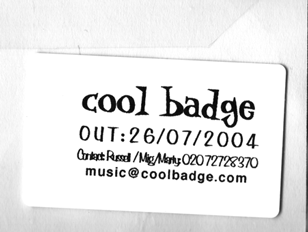 |
the key information on a sticker on the front:
note name of promo company (invent your own)
RELEASE DATE (BIG) + contact number and email address/website |
|
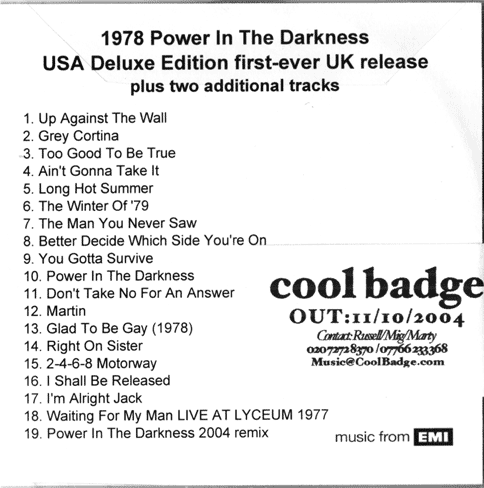 |
| just to show I now practise what I preach ! |
|
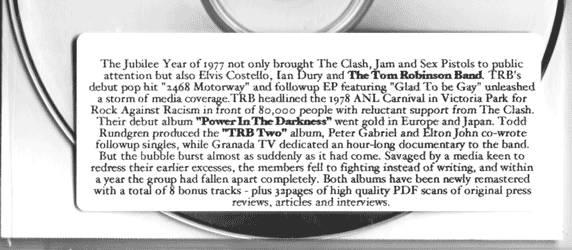 |
| the blurb on the back sticker tries to make as
many connections with the reader's experience as possible (oh
yeah, I've heard of that) |
|
 |
| cheeky blurb to make the track sound really important:
"a track which has become both an album and a live standout"
- use this sort of thing very sparingly, effective if pitched
exactly right, but radio producers have very keen bullshit detectors.
|
|
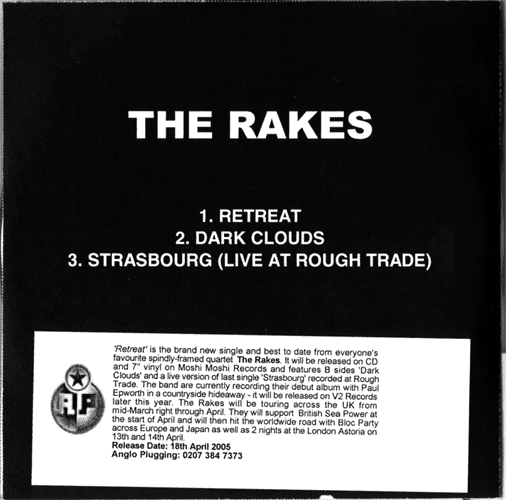 |
| newish band in 2005, benefitting from their
record deal with credible indie label moshi moshi records - they might never
see a penny in royalties, but (1) we've heard of the label,
so we know this disc won't be total pants (2) the label have
been able to get them support slots with bands we HAVE heard
of (British Sea Power) and (3) the moshi moshi deal has brought
them to the attention of a bigger label - which may well
rip them off worse, but will promote their forthcoming album even better. |
|
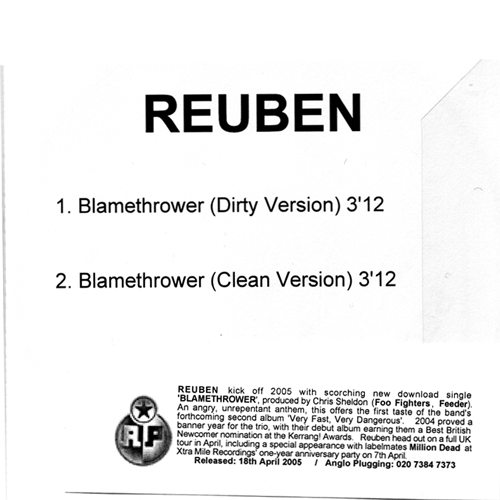 |
| I'd never heard of this band at the time, but this
blurb was worded in such a way that it made me feel I ought to have
done. |
|
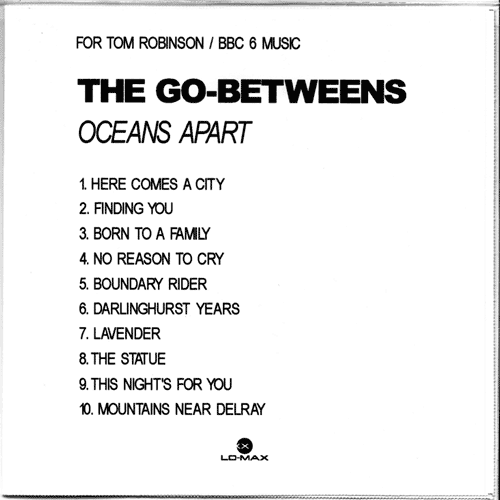 |
| nice touch - personalising the cover - again,
use sparingly, but nice. clear simple professional-looking layout,
and a little logo at the bottom (even though I've never heard
of the company and it might be made-up) make it look classy. These
kinds of typefaces, relative weights and layouts are pretty typical.
the only place where this one falls down is: no timings for the
tracks, and no big clear release date on a sticker on the front. |
|
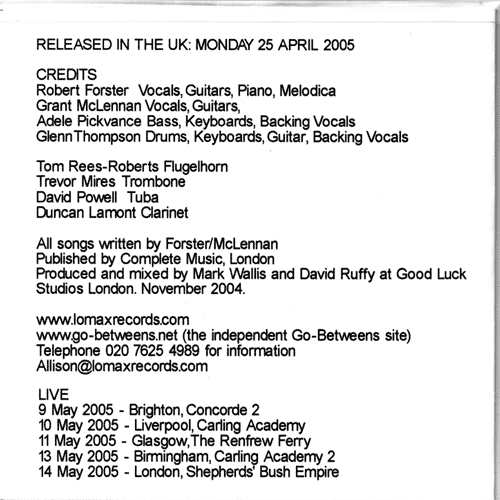 |
| the back of the go-betweens album promo - there's
that release date that was missing from the front. Instead of blurb and hyperbole,
the back simply gives us the facts and contact info rather than a load of hot
air. Simple and effective |
|
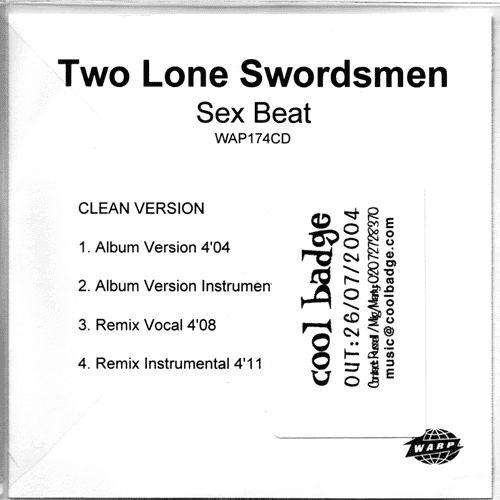 |
| THIS is the way to do it. Clean lines, all the
releavant information, name of the artist and track title up big,
release date sticker on front, and a nice little b&w logo
in the bottom RH corner. |
|
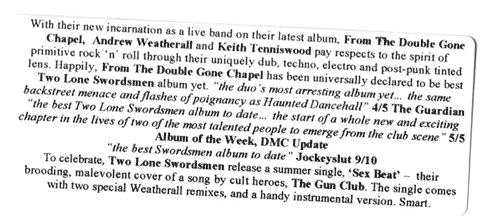 |
| back cover sticker for the Two Lone Swordsmen
single |
|
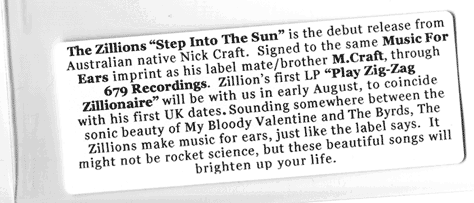 |
|
they don't have any rave reviews by national publications they
can quote, they don't have any tour dates they can tell us about,
or any famous members, guests or connections. (M.Craft isn't
much more famous than they are). There's not even a web site
for us to look at, or a number we can call for more info. But
the layout is in the right typeface, about the right length,
and at a casual glance this looks every bit as serious and professional
as all the above examples - this CD will get heard, even if
only for the first 30 seconds !
|
|
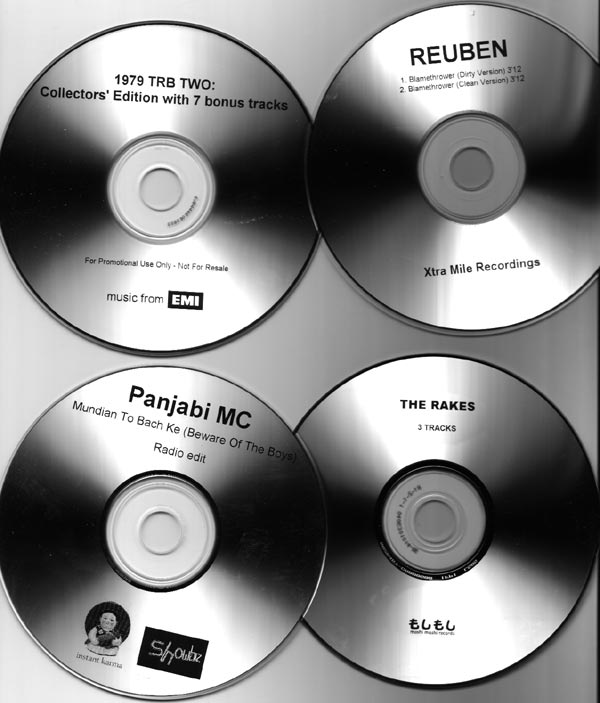 |
|
Black and white laser printed paper labels in plastic sleeves
are fine, but the one thing that can sell you short is the disc. marker pen
on a standard CD-R disk just looks naff and amateur.
serious releases (by even tiny record
labels) print the record information in black on
a plain-faced silver disc as above. Check out how to
get this done, or invest in a printer and blank
discs that will allow you to do it for yourself.
back to the top
close window
|
|
| |























